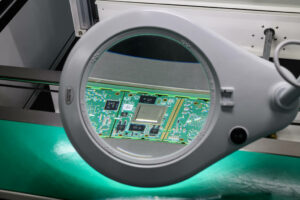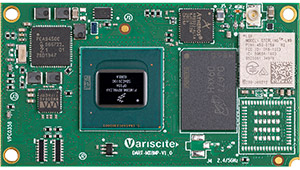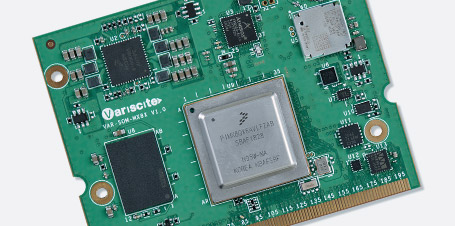Sold under brand names like Arduino, Udoo, Raspberry Pi and others, hacker boards increasingly are serving as the foundation of technology projects found in IoT, wearables, robotics and portable devices. Starting as low as $15, these boards are part of a new manufacturing trend supported by a community of hobbyists and DIY developers that use low-cost hardware components and open-source software to create mini-computer platforms. As they move up the ecosystem from a hobbyist device to handling more advanced, commercial applications, are hacker boards an economically viable option or a costly mistake?
Here are the factors that lead SOMs to be a better value than hacker boards:
• Support – professional and fast support helps shorten development time and ensures the product will continue to function as designed. Variscite has in-house professional support provided by the R&D team in addition to an extensive frequently updated online documentation center vs. hacker boards that rely on contributions from community forums for troubleshooting.
• Longevity – Industrial products are often in service for more than 10 years. Because community boards use technology based on consumer components that change every 2 to 3 years. Changing critical hardware components requires a complete rebuild of the device and software. Even if the change is minor, the customer will still need to re-certify the product and pass the entire regulatory process. Variscite provides up to 15 years of hardware longevity and keeps the software updated at no extra charge.
• Hardware flexibility – SoM as a concept allow customers to build a carrier board that is designed to fit their product’s size and layout, ensuring that only the connectors and end-product specific features are implemented rather than having extraneous on-board circuits and connectors. On the other hand, most hacker boards are Single Board Computers (SBC), the SBC as a concept doesn’t allow modifications.
Furthermore, hacker boards offer a limited technology and form factor portfolio with no configuration modification options or easy scalability. Variscite offers a broader portfolio based on several CPUs and feature sets and thanks to its in-house manufacturing, allows a wide range of customization to its off-the-shelf platforms. The customization options include removing unused capabilities from the SoM and configuring features like performance, memory, and storage. This customization leads to a price reduction eventually.
• Quality Standards – Originally designed as a platform to teach computing to students, hacker boards were not developed to perform to any guaranteed level or standard. Companies developing products that must conform to special quality standards, such as medical devices, need hardware rated to work without issues for years as well as certified hardware that meet the FDA requirement. These requirements include full component traceability and test logs maintained for 10 years for example.
All Variscite production is performed at fully ISO 13485, 9001 and 14001 compliant facilities and meets strict medical regulatory requirements.

High standards and 100% QA guarantee
• Temperature – Consumer-level technology of hacker boards typically lack a wider temperature range required for industrial use. Variscite provides several temperature rings that cover the industrial requirements, usually up to -40 to 85 degrees Celsius.
• Industrial functionalities – Hacker boards may lack essential hardware needed beyond the standard order to gain functionality needed for industrial embedded products. Integrating additional functionalities increases development time and risks, and ultimately puts their costs in line with industrial-oriented SOMs.
While these hacker boards have an attractive lower entry price point compared to System on Module / Computer on Module platforms, low cost does not equal better value. Hacker boards simply can’t compete with the standards of fully realized SOMs when it comes to industrial embedded products. Moreover, when taking all of the factors above into account like redesigning the product every 2-3 years and risking long delays due to unpersonal support, you may find the project’s cost above your expectations.

DART-MX8M-PLUS SoM based on iMX8M Plus processor
To showcase the differences, we created a comparison chart of different value propositions between our SoM offerings and those from a leading hacker board company:
| Company | Variscite | Leading Hacker Board |
| Price | – Starting from $24 for a low-performance SoM – Customizable configuration allows optimized pricing. |
– Starting from $15 for matching performance – Can go for as low as a few dollars for simpler boards |
| Longevity and End of Life | – 10-15 years longevity guarantee (above the market offer) | – No longevity guarantees – EOL usually after up to 3-4 years |
| Software updates | – Frequently updated by the company throughout the SOM life cycle. – Mature products are consistently updated as well |
– Frequently updated by community contributors. – No official updates for mature products |
| Support | – Free personal in-house support by the SoM developers’ team – Free online documentation and guides – Free schematic review – Free production-ready drivers and BSP |
– Community support – Third-party extra charge support – Free software drivers and BSP |
| Flexibility | – System on Module flexibility advantage – Vast ARM-based portfolio available with several form-factor options – Provides customization |
– Hacker boards lack true flexibility with just a few industrial-appropriate options – Minor customization – RAM options only |
| Manufacturing | – In-house manufacturing with complete control of the quality-validation process | – Outsourced production |
| Temperature grades | – Three options: – Commercial 0 to 70°C – Extended -25 to 70°C – Industrial -40 to 85°C |
– Limited – 0 to 50°C |
| Compliance & Standards | – Variscite’s production is certified for ISO 13485, 9001 and 14001 – Meets strict medical regulatory requirements |
– Partial compliance testing – Does not meet medical regulatory requirements |
| Pin-to-pin compatibility | – Two pin-compatible product families for easy migration between platforms at any stage of the device’s lifetime | – No pin compatibility
|
If pricing is your sole determinate for value, hacker boards may seem like the way to go. But for those looking to build embedded industrial products with the best combination of reliability, performance and price, choosing a high-quality SoM instead of a hacker board ultimately offers the best overall value to customers.
